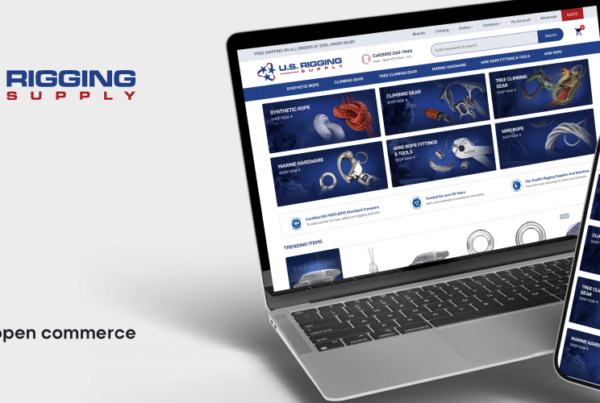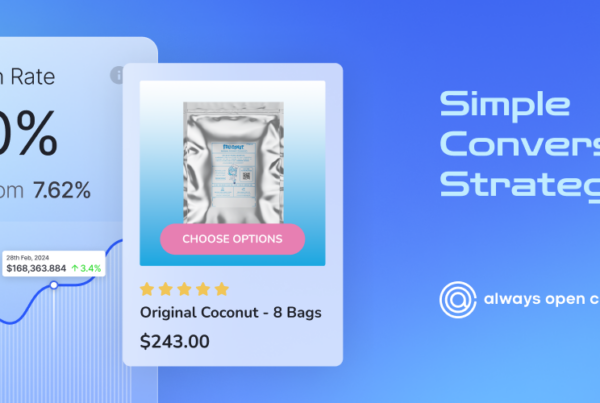As an e-commerce store owner, you know the impact of staying ahead for success, and sometimes, that means making some major changes behind the scenes.
Enter replatforming – a process that may sound intimidating but can actually magnify for your business. Dive into why replatforming is necessary for e-commerce stores like yours, and explore how to navigate the migration process with ease.
Why is Replatforming a Necessity?
Replatforming is migrating your e-commerce store from one platform to another. It transitions all your data, content, and functionality to a system that better aligns with your new business goals and customer needs. While it may seem daunting, replatforming is often necessary for several reasons.
Technology is constantly evolving, and outdated platforms can hinder your ability to deliver an exceptional online shopping experience. Replatforming leverages the latest features and advancements in e-commerce software, enhancing user experience, site performance, and staying competitive.
As you grow your business, you may find your current platform no longer meeting your needs. Whether it’s limitations on product catalog size or scalability issues during peak traffic periods. Replatforming lets you migrate to a more robust solution that accommodates higher volumes of traffic and supports future growth.
Customer expectations are ever-changing. E-commerce stores need to adapt quickly, offering seamless mobile experiences or integrating emerging technologies such as AI-powered chatbots or personalized recommendations. Replatforming gives you the opportunity to implement these innovative features that enhance customer engagement and drive conversions.
Ultimately, replatforming provides an opportunity for businesses to stay agile in an increasingly dynamic marketplace. Choosing the right platform tailored specifically for their needs unlock new opportunities for growth, delivering exceptional online experiences that keep customers coming back.
Choosing the Right Platform for Your Business
The right platform for your e-commerce business greatly impacts your success. With several options, carefully evaluate each one based on your specific needs and goals.
BigCommerce is a popular choice for mid-sized to enterprise-level businesses. It offers a robust set of features and integrations, making it easy to customize your store and manage operations efficiently. With its built-in SEO and marketing tools, you drive more traffic and convert more customers.
Shopify is a user-friendly platform. It offers a variety of themes and apps, making it easy to create a professional-looking store without coding knowledge. It has a strong focus on mobile commerce, allowing seamless transactions on multiple channels.
Magento is a powerful open-source platform that offers advanced customization capabilities and flexibility. It’s reliable for large businesses with complex product catalogs and high volumes of traffic. However, technical proficiency is imperative in setting up and maintenance.
Choosing an e-commerce platform demands prudent deliberation of scalability, features, usability, and cost-effectiveness. Evaluate these factors to help with decision-making and selecting the best base for your business.
Steps to a successful replatforming process
With careful planning and execution, replatforming your e-commerce website can lead to significant improvements in performance and customer experience. Here are the essential steps to ensure a successful replatforming process:
Audit Your Current Website
Conduct a thorough audit of your current website. This lets you recognize the strengths and weaknesses of your existing platform. Analyze your website and assess the scalability of your current platform. Look at page load times, bounce rates, and conversion rates.
Review the functionality and features of your current platform. Consider what are critical for running an online store, such as inventory management, mobile responsiveness, SEO optimization, and integration with third-party tools.
Create a Migration Plan
Creating a migration plan ensures that you have a well-organized roadmap to guide you through the transition. Assess your current website and identify what needs to be migrated. This includes product data, customer information, order history, and any other relevant content. Take note of any customizations or integrations that will need to be replicated on the new platform.
Determine your timeline for the migration. Review factors such as peak sales periods or upcoming marketing campaigns that could impact the timing of your replatforming efforts. Make sure to allocate enough time for testing and troubleshooting before going live with the new platform.
Transfer Data and Content
Ensure that your existing data is organized and ready for transfer. This includes product information, customer data, sales records, and any other relevant data points. Clean up and consolidate this information for a hassle-free migration. Depending on the complexity of your store and the platforms involved, this could involve manual entry or automated migration tools.
During the process of transferring content from one platform to another, make sure there are no broken links or missing images to not lose SEO value during migration from search engines perspective.
Test and Optimize the New Platform
Once you have successfully transferred all your data and content to the new platform, put it to the test. Testing guarantees that functions are smooth and running as expected on your e-commerce store. Thoroughly test each feature, including product pages, search functionality, checkout process, and other components.
Check for any broken links or missing images that may have occurred during the migration process. Make sure all SEO elements are properly implemented on the new platform. This includes optimizing meta tags, URLs, headers, and content for relevant keywords related to your products or services.
Launch and monitor
After all the hard work of auditing, planning, transferring data, and testing your new platform, it’s finally time to launch your replatformed e-commerce store! Closely monitor your new website’s performance. Keep a close eye on key metrics such as website traffic, conversion rates, average order value, and bounce rates.
Pay attention to customer feedback and user experience on the new platform. Regularly analyze data and make necessary adjustments based on what you discover. Continuously optimize your e-commerce store by implementing A/B testing for different elements such as product pages or call-to-action buttons.
Common challenges during the replatforming
While replatforming brings numerous benefits to your e-commerce store, acknowledge that you may face challenges during the process. Understanding these potential obstacles help you better navigate them, ensuring a successful replatforming experience.
1. Data Migration Issues: Seamlessly transferring data from your old platform to the new one. This includes product information, customer data, order history, and more. Any discrepancies or errors in this transfer can lead to lost sales and frustrated customers.
2. Design and Customization Limitations: It’s possible that certain features or elements may not be easily replicated on the new platform. This could require additional development work or compromisation.
3. SEO Impact: Replatforming can have a significant impact on your search engine rankings if not executed properly. Changes in URLs, site structure, or content organization may result in temporary drops in organic traffic while search engines adjust to these changes.
4. Downtime and Technical Glitches: Moving an entire e-commerce store from one platform to another involves complex technical processes which can cause downtime or glitches during the transition phase.
5. Training and Adaptation: Shifting to a new platform means learning how to operate its interface effectively for you and your team members involved in managing the website backend operations.
6. Customer Experience Disruptions: Replatforming may temporarily disrupt some user experiences due to changes in navigation menus, checkout processes, or other functionality modifications. Detect any issues early on so they can be resolved swiftly without impacting customer satisfaction levels significantly
Despite these challenges, replatforming still offers immense opportunities for growth! With careful planning, migration, and testing, you can successfully navigate the replatforming process and unlock the full potential of your e-commerce business. At Always Open Commerce, we have certified developers and designers that will work closely with you in successfully migrating your website. Our SEO Specialist and data manager will also be there to ensure smooth optimization. Ready to migrate? Contact us now!












